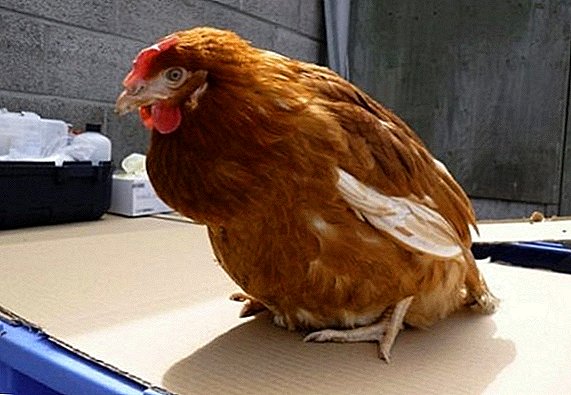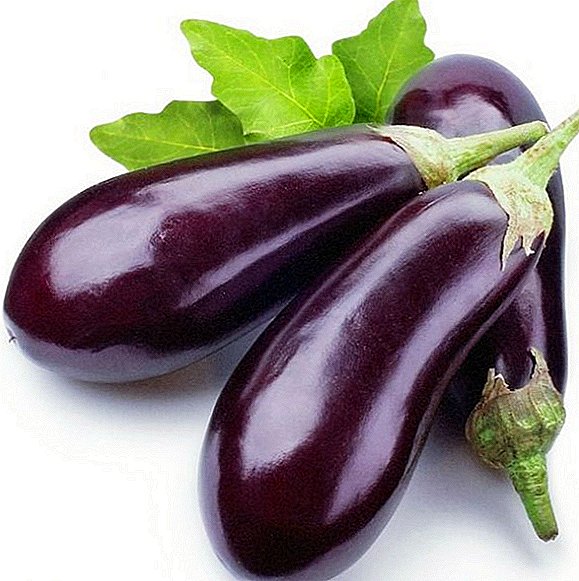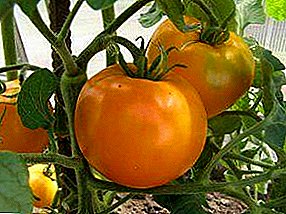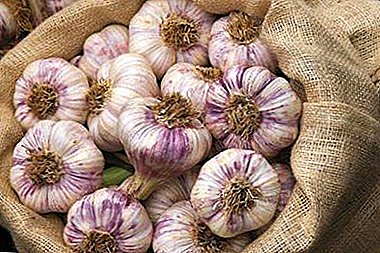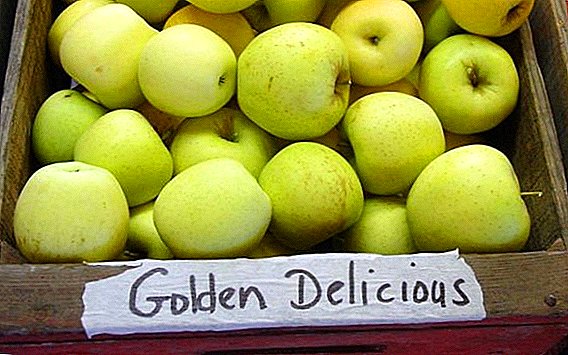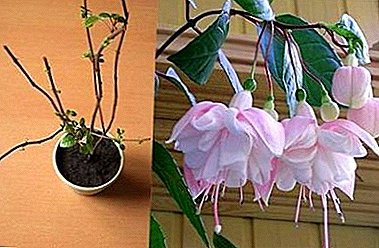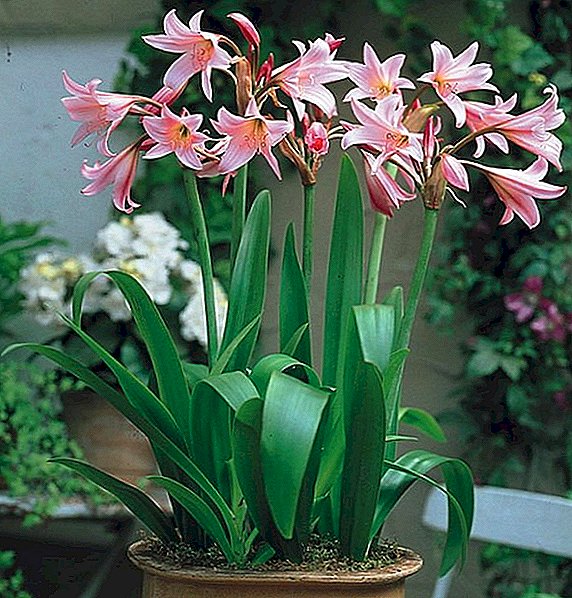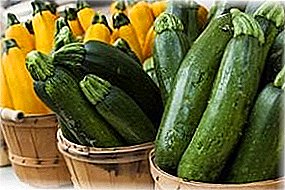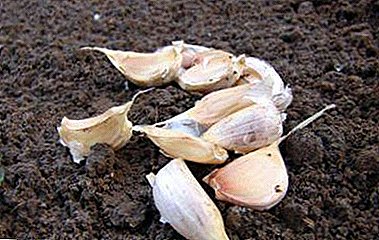
For a long time, garlic continues to be a favorite ingredient in the preparation of many dishes and is popular in Russia.
There is an increased demand for garlic. This leads to the profitability of the garlic growing business. But for this you need to understand all the subtleties and nuances of growth of this plant.
More information about planting in the spring and the differences of the procedure in the fall, how to prepare materials, as well as possible problems and difficulties can be found in this article.
Can I plant in the spring?
Garlic varieties can be divided into 2 types: winter and spring. Winter is the majority of varieties of garlic, they are planted in the fall. Spring planted spring varieties. Visually, these varieties can be distinguished by the presence of a vertical central rod in winter garlic varieties and its absence in spring ones. This is due to the fact that winter varieties are overwhelmingly arrowed, and part of the arrow remains in its head.
Spring varieties do not usually shoot, and the bulbs consist of cloves. In spring garlic, cloves are smaller than those of winter, they are randomly arranged. Spring garlic is less resistant to frost, so it is advisable to grow it in the southern regions of the Russian Federation:
- Rostov region;
- Krasnodar region;
- North Caucasus.
Spring varieties of garlic are preferably planted in spring, due to its low frost resistance.
Features and differences of the procedure in the autumn
 Many gardeners share garlic varieties by planting time. This is not entirely true, since any variety can be planted in spring and autumn. But these varietal groups have different biological properties. Proceeding from this, spring garlic is more expedient to plant in spring (is winter garlic planted in spring?).
Many gardeners share garlic varieties by planting time. This is not entirely true, since any variety can be planted in spring and autumn. But these varietal groups have different biological properties. Proceeding from this, spring garlic is more expedient to plant in spring (is winter garlic planted in spring?).
Planting in the autumn allows you to free up time for planting other crops. Spring varieties do not have such a high survival rate and stability when planting in the fall. Their main advantage is longer shelf life. It should be noted that the planting of winter garlic in the fall is partly due to the short shelf life. But harvests of such garlic are higher.
Reference! Separation by landing time is only a very conditional feature. All varieties can be planted both in spring and autumn. But if the planting deadlines are not met, the yield may fall, and the quality of the bulbs may also fall.
Spring garlic prefers light loam, and winter - sandy loam. Summer varieties are planted only in teeth, because they do not have arrows, where air bulbs grow. Details on when to plant spring garlic in the spring and why planting dates are so important, read this article.
When is it best to perform the procedure?
Spring varieties should be planted in spring. The best time is the end of March - the beginning of April. Disembarking is done after snow cover comes off the ground and the temperature stays at a level no lower than +5 degrees.
The main condition is the saturation of the soil with water, with a lack of moisture, the garlic will grow, but the yield will be low. For planted spring varieties, the threat is hot weather, therefore, the landing should be carried out early.
Can I immediately put in open ground?
Possible landing Zubkov immediately into the ground. But to increase the percentage of germination and yield it is necessary to carry out a complex of preplant preparation, which involves keeping the planting material in cool conditions and preplanting the bulbs.
Step-by-step instruction on the preparation of materials
As already noted, the reproduction of winter varieties of garlic occurs by planting cloves. To obtain a rich harvest, you must comply with the requirements of agrotechnology.
Preparation of garden tools
 By the time of planting, garden tools must be available and ready to use. It is advisable to disinfect garden tools and planting containers. This will reduce the damage to the bulbs by pests and diseases. To do this, apply a treatment with a solution of formalin (250 cm3 of the drug per 10 liters of water) or infusion of bleach (400 g per 10 liters of water).
By the time of planting, garden tools must be available and ready to use. It is advisable to disinfect garden tools and planting containers. This will reduce the damage to the bulbs by pests and diseases. To do this, apply a treatment with a solution of formalin (250 cm3 of the drug per 10 liters of water) or infusion of bleach (400 g per 10 liters of water).
For landing will need:
- shovel;
- hoe;
- rake.
In large farms, plows and harrows are used for tillage, and garlic planters are used for planting.
Soils
 Be sure to prepare the soil before planting. To do this, it is fertilized using:
Be sure to prepare the soil before planting. To do this, it is fertilized using:
- organic (humus);
- mineral fertilizers:
- phosphoric;
- potash;
- nitrogenous;
- microfertilizers.
When grown on an industrial scale, plowing and harrowing are used. When grown on the backyards, the soil needs to be dug up 1-2 weeks before planting, also it needs to be treated with a rake, in order to remove large clumps of soil. Landing areas should be well lit.
The soil should be drained, adding sand to the soil has a good effect, which improves its drainage. Garlic does not grow well on soil with a high level of acidity. The optimum level of acidity is considered to be pH 6.5 to 7.9.
Teeth
 It is necessary to take the preparatory work seriously, since the success of crop growth and the volume of future harvest depend on them. It is necessary to correctly identify the variety of garlic and its belonging to the spring varieties. Held:
It is necessary to take the preparatory work seriously, since the success of crop growth and the volume of future harvest depend on them. It is necessary to correctly identify the variety of garlic and its belonging to the spring varieties. Held:
- inspection;
- bulb calibration and selection;
- their stratification;
- as well as soaking.
It is necessary to inspect the entire seed, to detect all diseased bulbs and separate them from the main mass. Do not immediately separate the teeth from the heads. This is desirable to do the day before soaking and disinfection.
- A month before the date of planting in the soil, the bulbs must be moved to a refrigerator or other cold room (cellar), for stratification. The temperature should be at + 3 degrees.
For planting material is better to use external teeth from the first row. The inner part is not used because too small bulbs grow from it.
- About a day before planting, you need to get the garlic, give a little warm at room temperature.
- Then you need to divide the bulbs into cloves, conduct a selection of sick cloves.
- On the day of planting, before the procedure it is necessary to treat the bulbs, you can soak in a solution of fungicides or in a solution of manganese for half an hour. This will minimize the risk of entering fungal diseases in the sown area. You can also use a solution of ash.
- To improve the germination of applied processing using growth accelerators. There is a wide range of growth accelerators, so you need to act in accordance with the instructions for their use.
To protect against wireworms, use a soaking solution in a salt solution (1 tablespoon per 1 liter of water) for 1 minute.
The process itself - how to plant?
The process of planting garlic is not difficult but compliance with the basic rules is a must!
After what cultures?
It is not advisable to plant the garlic on the acreage, where they had previously grown onions, potatoes and tomatoes. Desired predecessors are cabbage, legumes, zucchini and cucumbers.
More about the compatibility of garlic and various vegetables, as well as after what crops it can be planted, we told in a separate material.
At what depth to put the spring and winter varieties?
When planting spring varieties apply a shallow depth of planting than for winter varieties. The average depth of landing is 5 cm. Excessive penetration of bulbs, slows down the period of their germination.
Scheme
Planting of garlic is carried out in straight rows, the spacing is 20-25 centimeters. The distance in the row between the bulbs will depend on their size. Usually garlic is planted at a distance of 10 cm from each other in a row. Dental need to be planted strictly vertically.
Care
 Care of planted crops is the timely removal of weeds, loosening and watering. For a good harvest, an important role is played by watering.
Care of planted crops is the timely removal of weeds, loosening and watering. For a good harvest, an important role is played by watering.
It is desirable at the beginning of the growth period of the seedlings to make two supplements of garlic with nitrogen fertilizers. The interval between supplements should be 2 weeks.
Phosphorus-potassium fertilizers are applied to the soil when planting crops. Also apply organic fertilizers:
- humus;
- slurry solution.
An excess of organic fertilizer can cause the leaves to yellow.
From mid-April to early July, the crops are irrigated once a week. With an abundance of precipitation, irrigation is reduced partially or even completely. To combat the stagnation of moisture between the rows do drainage grooves. In cold summer watering is carried out less frequently - 1 time in 9 days. The water consumption rate is from 5 to 10 liters of water per 1 square meter. It is permissible to increase the volume of water in dry periods.
Attention! It is necessary to stop the irrigation of garlic 3 weeks before the intended harvest.
For successful growth it is necessary to carry out timely removal of weeds from garlic beds.
Possible problems and difficulties
Spring garlic does not tolerate too low temperatures, in connection with which disembarkation should be made only when favorable conditions come. Also, problems can arise from pests and diseases. However, with timely detection and control, they do not pose a serious danger. There is a wide range of insecticides and fungicides that can protect your plants.
Spring varieties of garlic with the right agricultural technology will delight you with a rich harvest. Tasty and fragrant onions will make your dishes tastier, especially since garlic is good for health.


